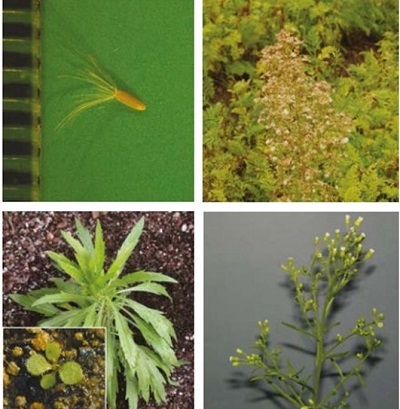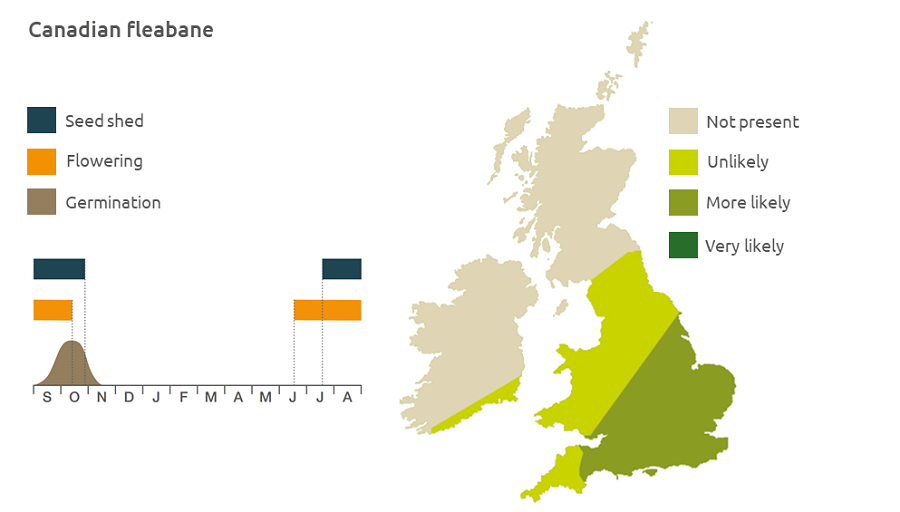- Home
- Knowledge library
- Distribution and biology of Canadian fleabane in the UK
Distribution and biology of Canadian fleabane in the UK
Canadian fleabane is a sporadic broad-leaved weed of annual arable and vegetable crops. Find out how to identify and control it.
Overview
Canadian fleabane (Conyza canadensis) only occurs sporadically but increasingly in annual arable and vegetable crops, e.g. carrot and parsnip.
Description
It is an upright, branched annual dicotyledon, growing up to 180 cm tall. The plant germinates in winter and overwinters as a small rosette of long hairy leaves, sometimes with toothed edges, from which the flowering stem grows during late spring. Small daisy-like flowers with upward-pointing petals are tightly enclosed by the sepals, and occur in loose flower spikes.
Lookalikes
Canadian fleabane may be confused with daisy which is similar in the seedling stage, but has more-rounded cotyledons.
Field forget-me-not is similar at the seedling stage, but has hairy cotyledons.

Location and life cycle

Geographic distribution
Canadian fleabane is a plant of open lowland habitats such as gardens, waste ground, railway ballast and urban areas.
Soil type
It grows on rough, stony, sandy or drained loam soils with some nitrogen.
Seed statistics
- Seed weight: 0.333 mg
- Seeds/flower: 45
- Seeds/plant: 0–50,000
Management
The rosettes can be destroyed by autumn cultivations.
For advice on herbicides, please speak with your agronomist or adviser.
When was this information last updated?
This page is based on content from the encyclopaedia of arable weeds publication. Since it was first released in 2008, the publication has been redesigned several times but not revised. However, it remains a good foundation for general information on the distribution and biology of weeds.

